The Shirez Canyon which is named “Tang-e Shirez” in Farsi is an absolute masterpiece of nature. The Grand Canyon of Iran is a distinctive geological structure that astounds every visitor. Shirez Canyon, which is 5km long and 150–200m high, draws crowds of visitors who want to take a walk through the canyon and enjoy the cool environment within. This location is a great choice if you want to have a unique trip during your stay in Iran.
An Overview of Shirez Canyon
It is reasonable to state that the Shirez Canyon of Koohdasht, also known as the Grand Canyon of Iran, is one of the most remarkable and stunning destinations to visit in the country’s western region. This natural landmark is in the province of Lorestan and is included as a geopark on our nation’s list of national monuments by UNESCO.
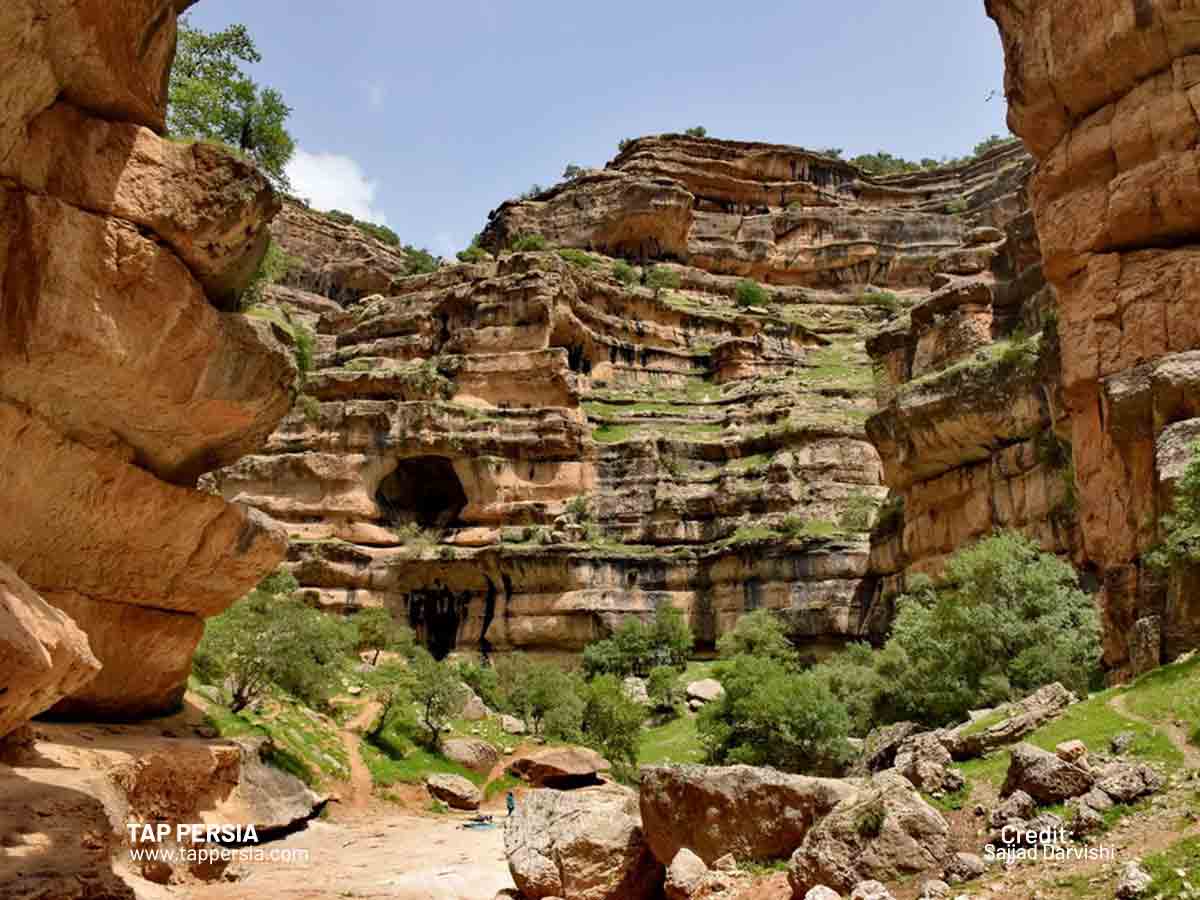
The little and large springs, the lovely river that runs through it, and the harsh and rocky environment that has made it soft and attractive are what set this canyon apart from other canyons in the Zagros mountain range. Of course, one cannot overlook the impact of the canyon’s untamed trees and tall, jagged rocks.
This canyon is covered with lush flora and boasts a stunning, largely unspoiled forest. As a result, the most attractive way conceivable that plants and trees have been combined with the rock is one of the first things that will draw you to this location. As soon as you start walking through the canyon’s center, you’ll come across springs with beautiful, running water that provide calming sounds amid the stillness of the area.
The Shirz Canyon now has lovely springs that are worth seeing as a result of the rivers that pour into it. No human being can get enough of seeing the beautiful spring water dance from the mountaintops into the canyon and then dissipate as it reaches the rocks.
The Geographical Location of Shirz Canyon
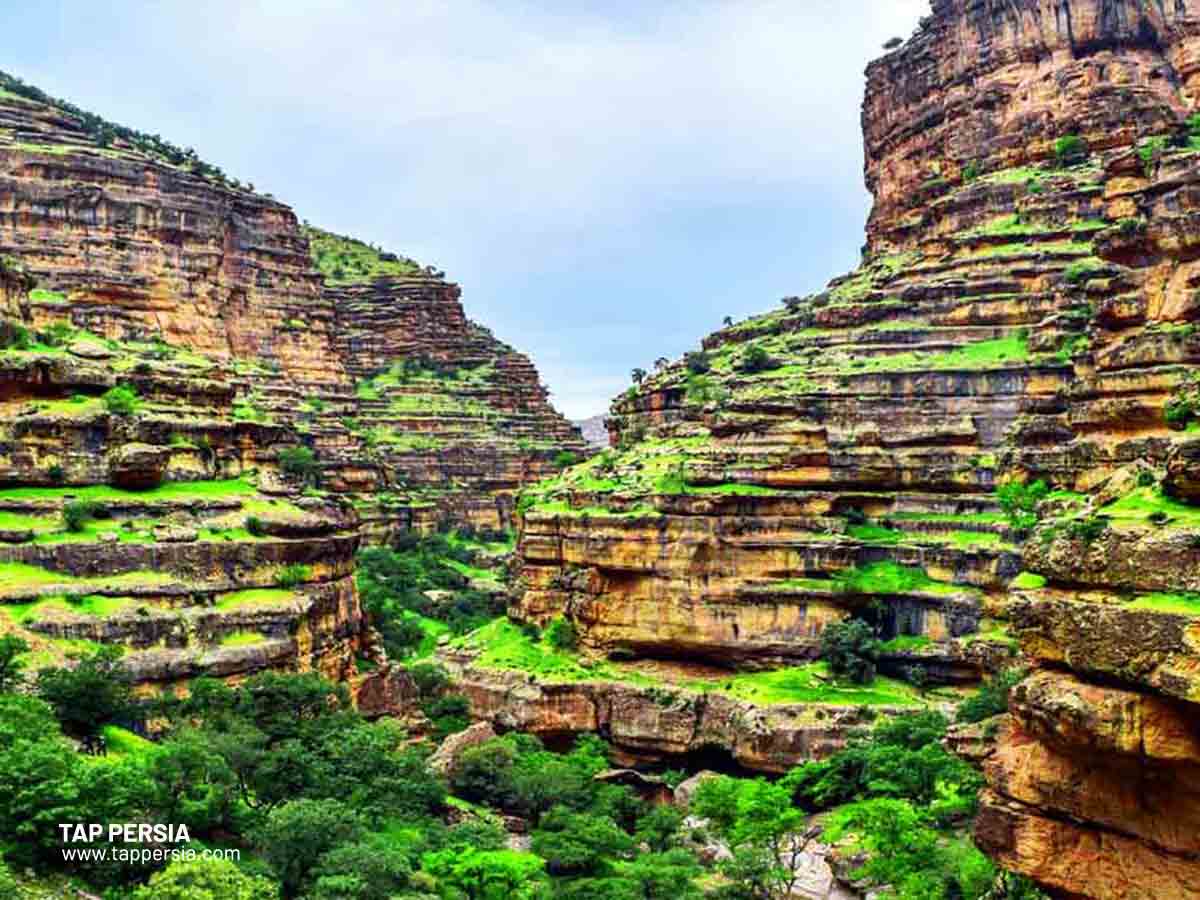
In the center of Iran’s Zagros Mountains is Shirez Canyon. Located in the western portion of the province of Lorestan, in the county of Koohdasht, and 55 km from Koohdasht’s neighboring provinces of Kermanshah and Ilam. A large river called “Seimareh” flows next to the Shirez Canyon, meets the Karkheh River, and finally empties into the “Hoor Al-Azim” wetland in the south.
The Formation of Shirez Canyon
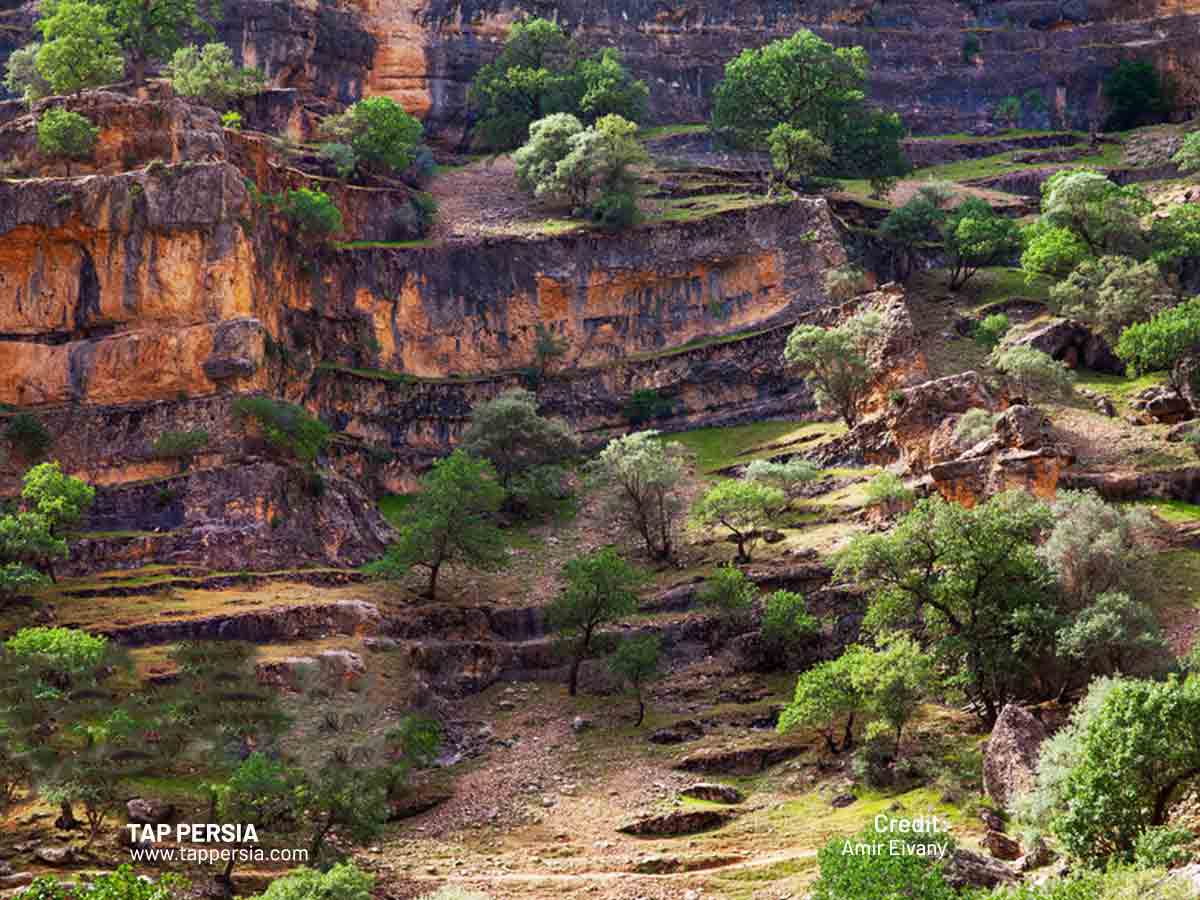
The erosion of sedimentary rocks with distinct layering, according to geologists, is what caused the canyon to develop. Asmari formations are rocks that were created in a marine environment during the third geological age, sometimes known as the Mesozoic epoch.
A column that resembles the Shirz Canyon column in shape and symbolism was created by the wind with the assistance of nature and natural occurrences like earthquakes. 80 meters is roughly how high and 10 meters is roughly how wide this column is. Also known as a stone minaret, the canyon column. The cultural heritage organization is paying particular attention to the canyon because of its historical characteristics and age.
The Historical Significance of Shirez Canyon
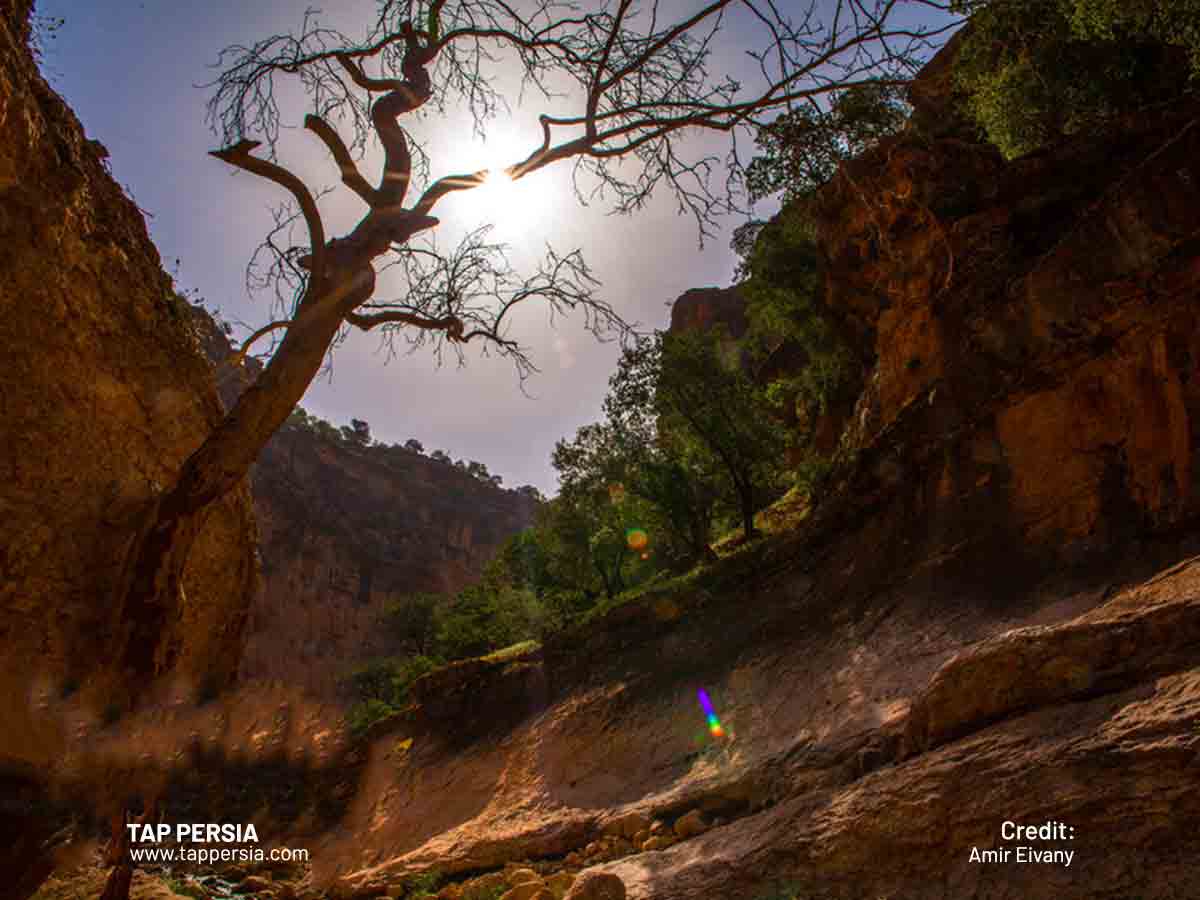
studies in history and archaeology demonstrate how ancient the canyon is. The discovery of ancient sites in the Shirez Canyon demonstrates that it dates back to the era when people lived in caves. A magnificent column that can be seen all across the canyon demonstrates how old this location is. Due to the fact that a column similar to the one in the gorge must form over millions of years.
What to Expect When Visiting Shirez Canyon
Here are important and beautiful attractions of the Shirez Canyon:
1.Natural Scenery and Wildlife
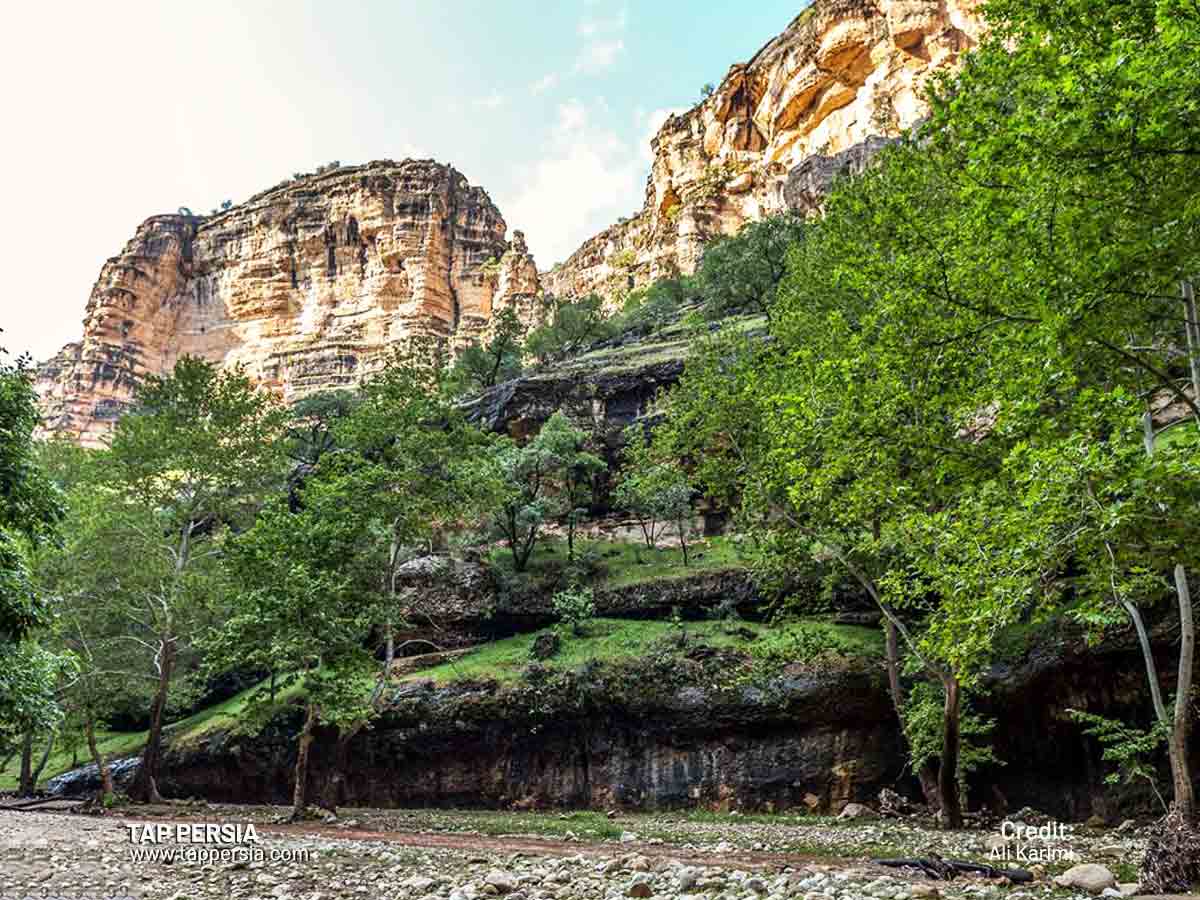
Shirez Canyon has a distinctive landscape, and as you approach the plain, soaring sycamore, fig, oak, grape, and wild pear trees will greet you. You can consume these fruits if you travel in the appropriate season. Mountain goats in the wild roam the Zagros Mountains. Additionally, if you cross a river and suddenly feel something strike you, look attentively at the river’s bottom to observe fish swimming in the crystal-clear water.
2.The Pol-e Khoda Cave
There is a cave with a 150-meter length and a river with extremely cold water flowing through it at the mouth of the Shirez Canyon. You should be informed that the water level in some areas of the cave may be higher than the knee when you enter. Due to the jagged floor stones that might cut your foot, it is not advised to enter the cave barefoot. Don’t forget to carry the essential supplies because the cave is completely dark inside and lacks a mobile antenna. This cave is referred regarded by the locals as “Pol-e Khoda” or “The Bridge of God.”
3.Stone Minaret
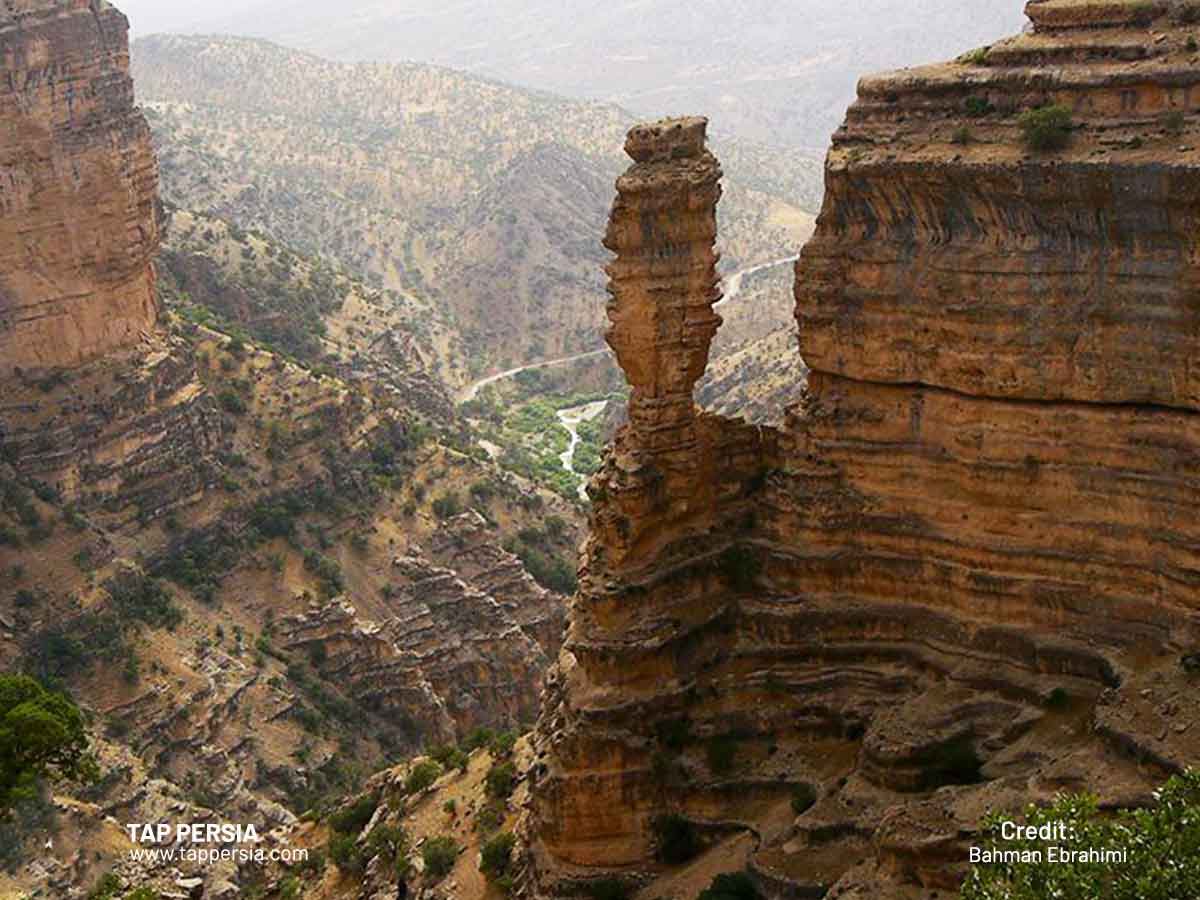
Shirez Canyon features a pillar that impresses everyone to see because of the millions of years, various weather conditions including wind and rain, and also the occurrence of strong earthquakes in the area. The stone minaret is more than 10 meters in circumference and 80 meters tall from the base of the rock to the top. It’s referred to as a stone minaret. One of the canyon’s attractions could be seeing it.
4.Parandegan Waterfall
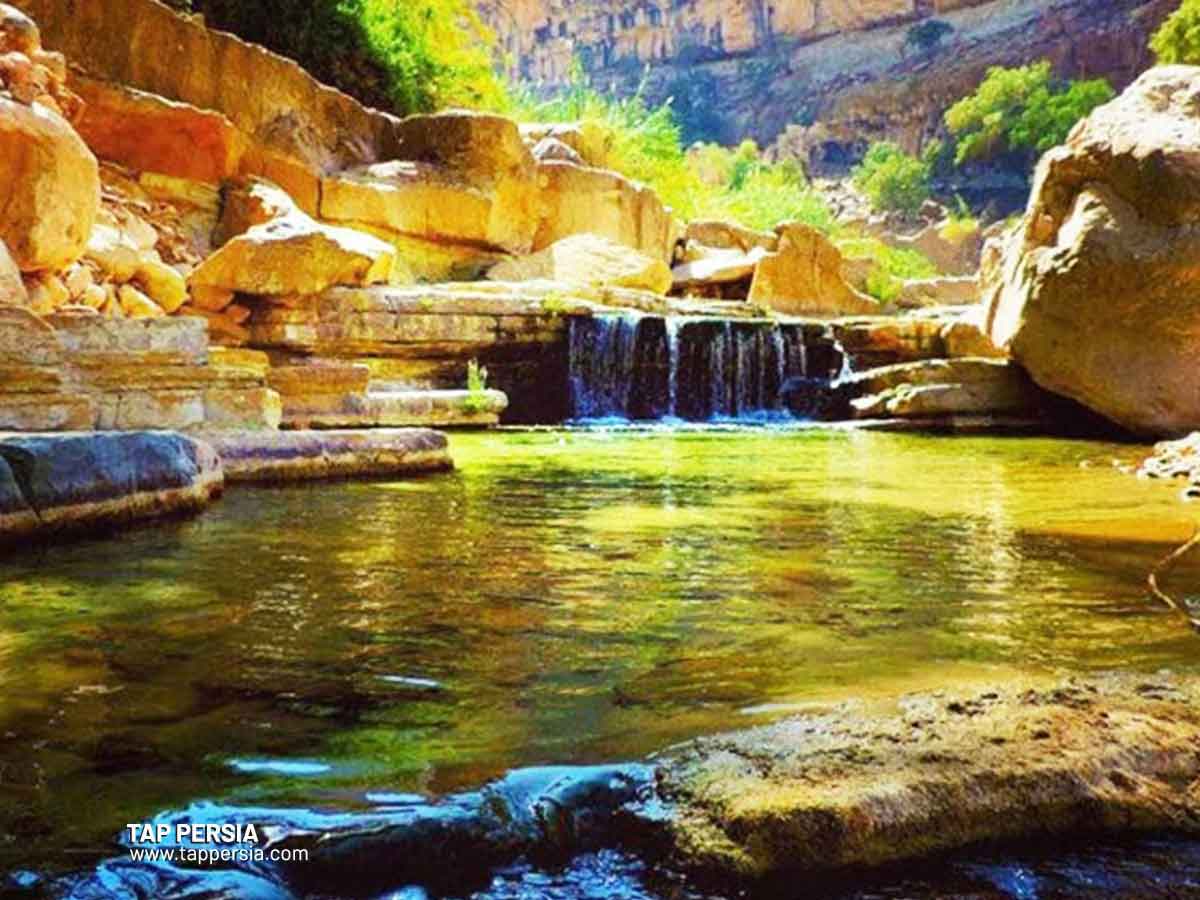
The Shirez Gorge in Lorestan is home to a number of waterfalls, but only one of them is commonly referred to as Bird’s Waterfall (Parandegan). While visiting Lorestan’s Shirez Canyon, you won’t see any signs of living creatures, but when you examine the holes carved out in the gorge’s walls, you’ll notice birds living and breeding there.
Other Tourist Attractions Near the Shirez Canyon
You may explore the Shirez Canyon of Kohdasht when traveling to this canyon because it is surrounded by a number of tourist sites. For instance, it is worthwhile to see the magnificent historical sites in the Kohdasht region, such as the Kohzad castle and the three-step bridge. In addition, with their pure natural beauty, the canyons and woodland regions around Shirez Strait are among the sites that soothe the soul and soul of every observer.
How to Get to Shirz Canyon
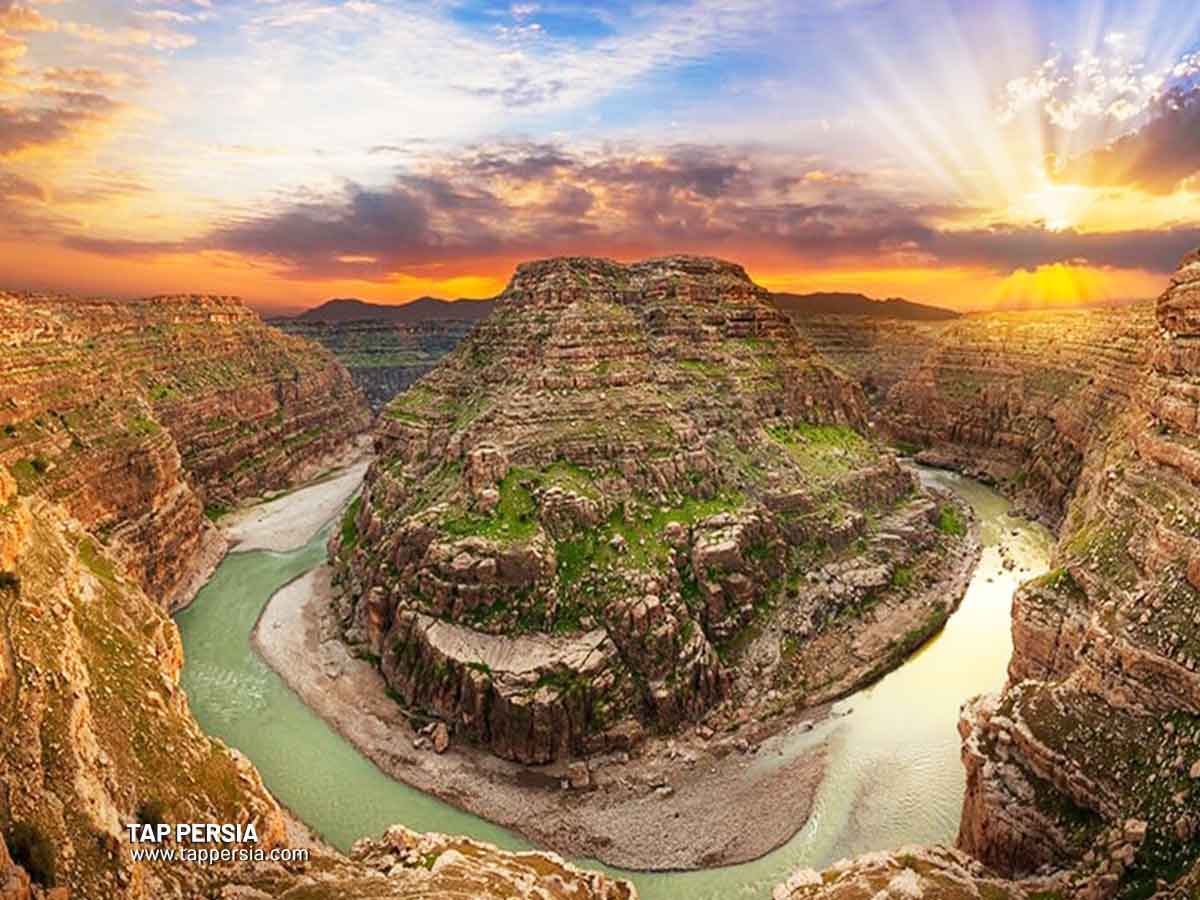
Kohdasht city is 55 km from Shirez Canyon or Shirez Strait. At the confluence of the three provinces of Lorestan, Kermanshah and Ilam, this tourist attraction is located in the province of Lorestan next to the Simre River. Shirez Strait may be reached by three different ways, each of which has distinct advantages and disadvantages.
1.Kohdasht-Tengeh Shirez Route
The best entry point to Shirez Gorge is north of Kohdasht City. On this route, you should head to Kohdasht after traveling 85 kilometers from Khorram Abad, then turn around and travel 50 kilometers to the west to get to Olad Qoba hamlet, which is located 50 kilometers north of Kohdasht. You can get to the Simre River from the Olad Qoba Road. Once you arrive at Shears Gorge’s entrance, keep traveling down the river. Drive down an asphalt road. Of course, the final two kilometers of the journey are on dirt. The trip is on foot from the end of the gravel road until you reach Shirez Gorge.
2.Kermanshah-Tengeh Shirez Route
Shirez Strait may also be reached from Kermanshah, which is another entry point. After arriving in Kermanshah, it is preferable to travel towards Jeyran Belagh and Halashi in order to get to the Zardlan part of the Shirez Canyon. Of course, it is possible to travel from Jeyran Belagh to the confluence of the Simre River at the end of the canyon, but this is a more challenging approach.
3.Lorestan-Tengeh Shirez Route
If you take this route, the distance between Khorramabad and Kohdasht is around 100 kilometers. You need to then proceed to Olad Qobad Road. After 50 km, pass via the settlement of Zardele to arrive at Shirez Canyon.
4.Exploring the Canyon: Walking and Camping
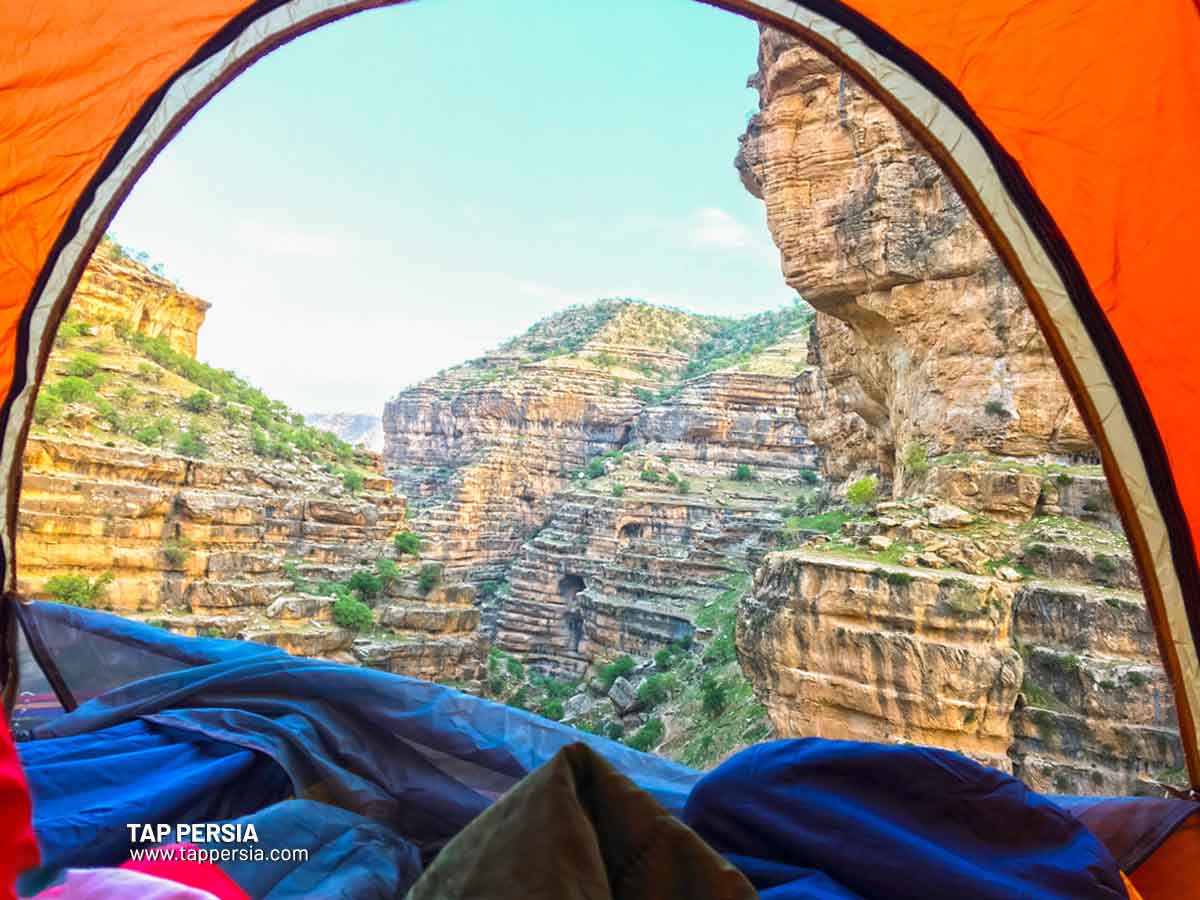
The final three km of the trip consist of a nice dirt road and a parking area near a fishing facility. The Shirez Canyon may be reached from here only by foot. It normally takes 3–4 hours to see the canyon, and you may camp either there or at the parking lot.
The Best Time to Visit Shirez Canyon
There is no doubt that spring is the finest season to travel to the Shirez Canyon since the scenery is so lush and lovely. Winter and fall are too chilly, while summer is sweltering. If you plan to camp there, keep in mind that the water is icy even in the summer and take into account the chilly evenings in the spring.
If you would like to know the best time to visit Iran, read this article
Essential Equipment for Trekking in Shirez Canyon
Bring additional clothing because swimming may be possible at this site. It is necessary to bring a torch because the cave is fairly gloomy inside. You’ll need nourishment for yourself after navigating Shirez Canyon. The riverbed is rocky and may have tangled objects; attempt to go across it wearing shoes and wearing appropriate and comfortable footwear.




Comment (0)